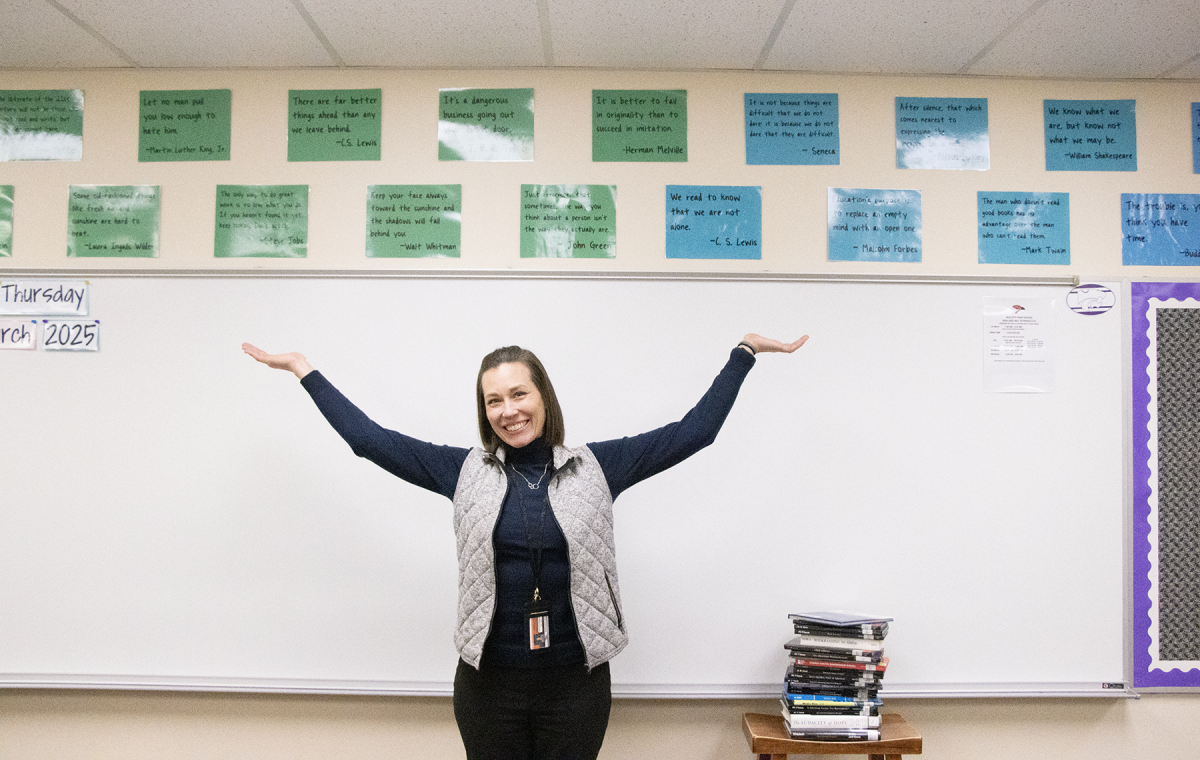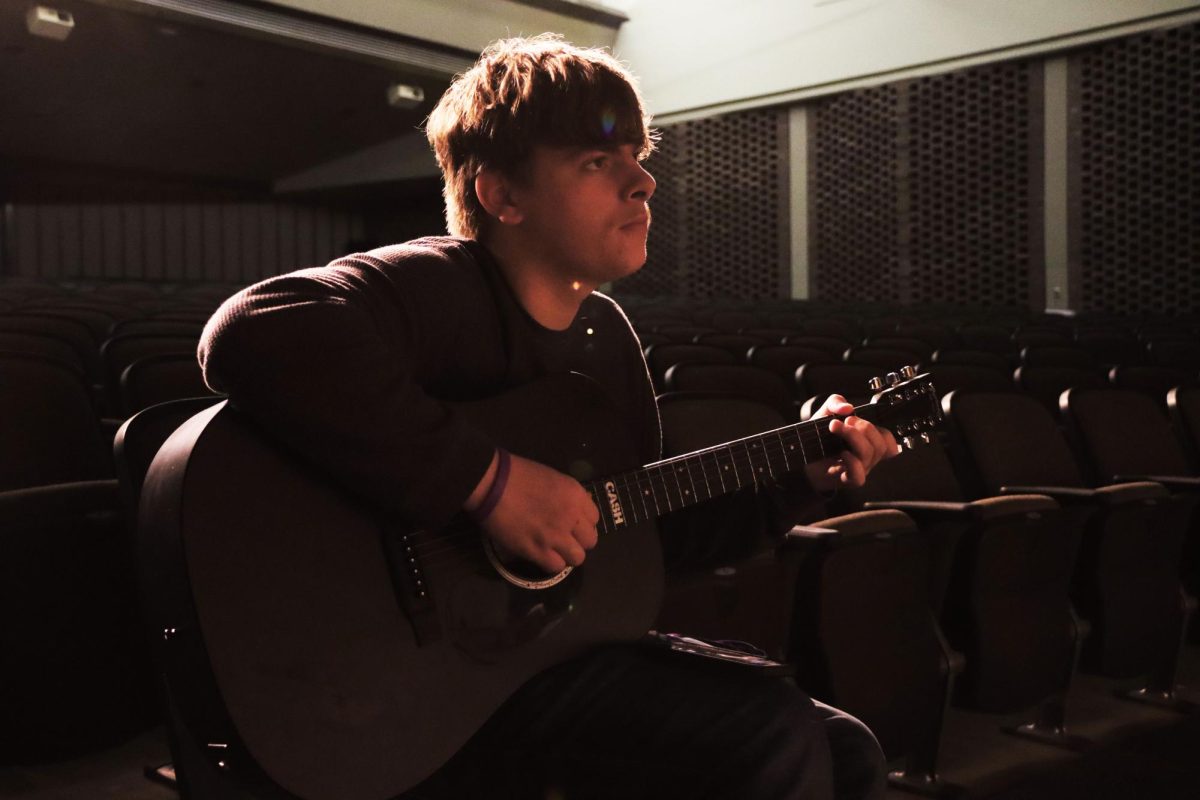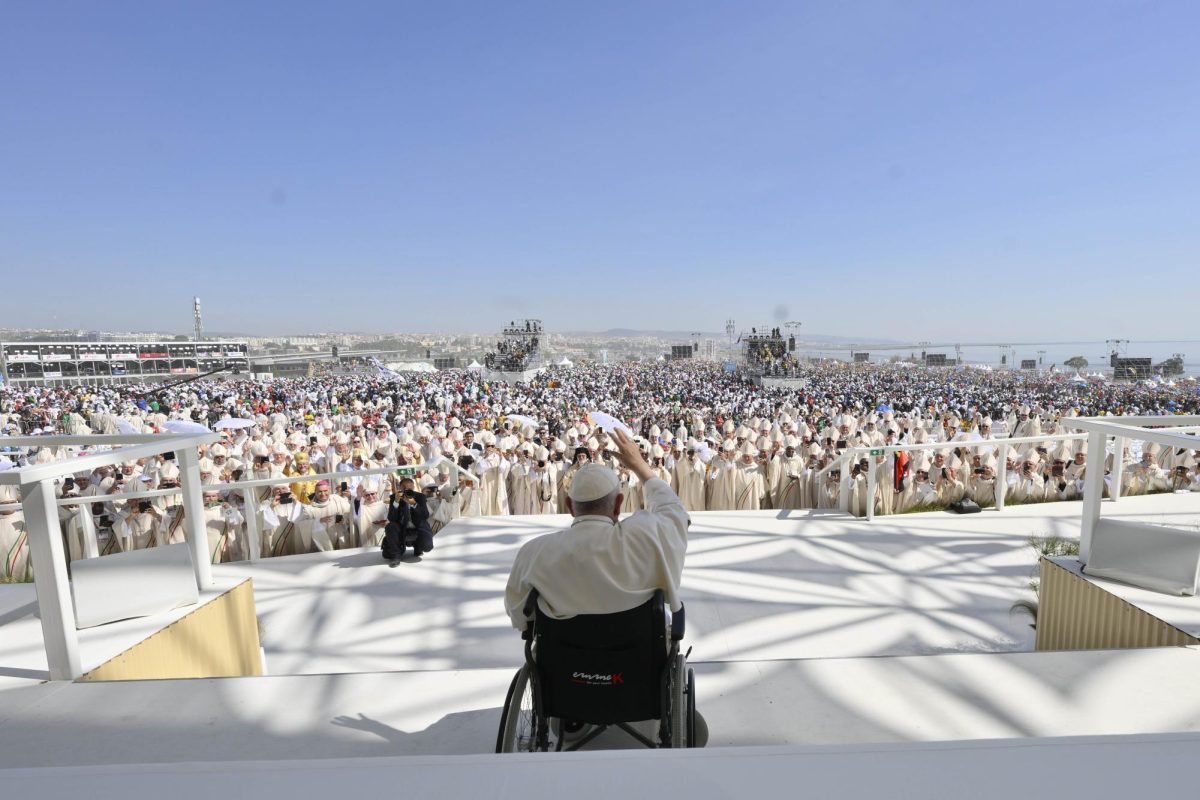Whether they are colorful, unique, geometric or personal, classroom decorations create a variety of settings in which students learn.
“I just like different colors. I mean, purple is obviously my favorite color, but I like lots of colors,” English teacher Rebbeca Timberlake said. “I just don’t want it to be overwhelming.”
Organization is important to Timberlake, but for teachers like social studies teacher Brad Raine, mayhem is more their style.
“It is mass chaos,” Raine said.
To some teachers, decorations mean more than just eye candy. Their decorations serve as reminders, while others tell a story of the past.
“I like the trees that are everywhere because they remind me of Oregon,” math teacher Sammi Cosby said.
Cosby spent the first 18 years of her life in Oregon. School days can run long for teachers, and the feeling of home can help in those situations. Friendships can even make their way into decorations. Timberlake and art teacher Audra Shelite have been friends for 18 years.
“I have a collection of pictures that Mrs. Shelite has painted or drawn for me,” Timberlake said.
The comforting feelings of home can also affect students in the classroom.
“They say it feels very homey; they like the vibe of the room,” Raine said.
In classrooms, decorations sometimes seem random, but more often than not, there is a story lurking in every corner.
“A student did a Renaissance Project 15 years ago, and the kid tried his hardest and made what was his Mona Lisa,” Raine said. “It still reminds me that it’s all about effort; it’s about getting kids to try their best.”
The classroom environment is also a way for teachers to express themselves and their teaching.
“I think when you walk into my room, you see me in a nutshell,” Raine said.
A key feature of Raine’s room is the different countries’ flags covering the ceiling lights providing a darker, calmer environment.










